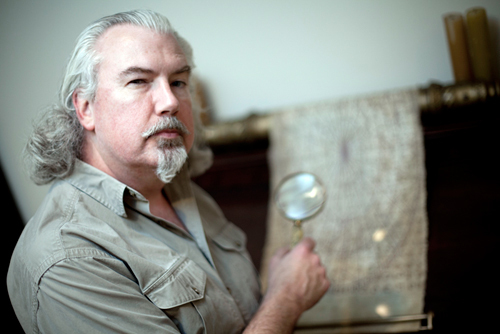“India is two countries in one: an India of Light, and an India of Darkness”
The White Tiger, Aravind Adiga
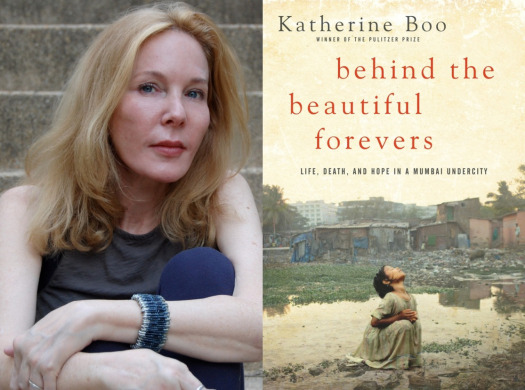 Last year, Coldplay’s single ‘Hymn for the weekend’ triggered an online debate for featuring Holi celebrations in Indian slums. The music video was criticized as oriental cultural appropriation and garnered angry YouTube comments for portraying the stereotype. But what those internet critics conveniently ignored was, the fact that, this is also India. The subcontinent is home to 1/3rd of planets poor and malnourished, who toil in country’s informal unorganized economy. At the same time India’s rising middle class, country’s well off representative sector and major shareholders in GDP, is suffering from an obesity endemic. This book is about the India of darkness that we don’t want to see, don’t want others to see and are eager to sacrifice in the rhetoric of “for the greater good“.
Last year, Coldplay’s single ‘Hymn for the weekend’ triggered an online debate for featuring Holi celebrations in Indian slums. The music video was criticized as oriental cultural appropriation and garnered angry YouTube comments for portraying the stereotype. But what those internet critics conveniently ignored was, the fact that, this is also India. The subcontinent is home to 1/3rd of planets poor and malnourished, who toil in country’s informal unorganized economy. At the same time India’s rising middle class, country’s well off representative sector and major shareholders in GDP, is suffering from an obesity endemic. This book is about the India of darkness that we don’t want to see, don’t want others to see and are eager to sacrifice in the rhetoric of “for the greater good“.
The structure of writing in itself is both the boon and curse of this book. There isn’t a central narrative or a plot to propel readers through, just interconnected stories that seem to go nowhere. Though aptly categorized as non-fiction, the reporting style makes it look more like a fix up novel. And the sole portion that justifies this style, perhaps the most important part of the book – Author’s note, is positioned at the end, at the mercy of readers. Behind the Beautiful Forevers tells the raw real life stories of people in Annavadi, one of the many squatter settlements adjacent to Mumbai Airport’s International terminal. Even though 40% of city’s population lives in low tier illegal settlements like Annavadi and fuels the formal economy by being the unaccounted blue collars; they are rarely counted by government standards and are often rendered invisible in country’s financial capital. In between Mumbai’s marbled megaliths, slums sort of appear like temporal anachronisms that escapes its affluent class like platform 9 3/4. Events and names in this book are real and were intensively documented over 3 years through photographs, audiotapes, video recordings and hundreds of supporting public records and interviews obtained over RTIs. Katherine Boo’s survey, however, is limited to Annavadi alone and it would be wrong to expect an encapsulation of poverty and inequality of country as a whole. The book doesn’t claim to be one as well. But by keeping herself to specificities, Boo’s narrative is free of generalizations and over interpretations or even dramatic fictionalizations. It is not pretty, it lacks big data sets or compelling narrative elements; and got nothing to offer on the flash side but non embellished honesty.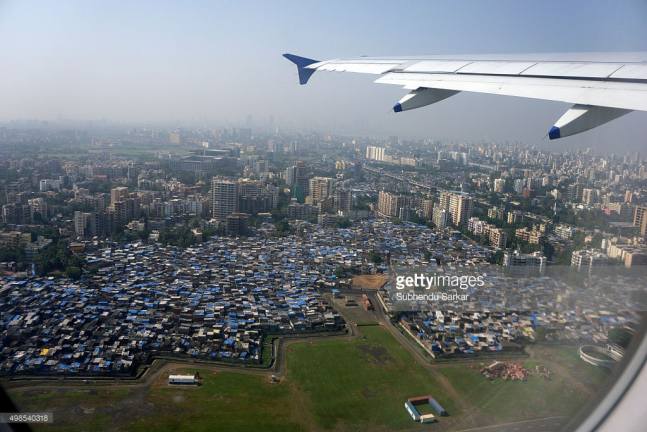 MUMBAI, MAHARASHTRA, INDIA – 2015/09/28: Aerial view of Mumbai city and Dharavi slums seen from inside an airplane. (via Getty Images)
MUMBAI, MAHARASHTRA, INDIA – 2015/09/28: Aerial view of Mumbai city and Dharavi slums seen from inside an airplane. (via Getty Images)
She had by now seen past the obvious truth—that Mumbai was a hive of hope and ambition—to a profitable corollary. Mumbai was a place of festering grievance and ambient envy. Was there a soul in this enriching, unequal city who didn’t blame his dissatisfaction on someone else? Wealthy citizens accused the slum dwellers of making the city filthy and unliveable, even as an oversupply of human capital kept the wages of their maids and chauffeurs low. Slumdwellers complained about the obstacles the rich and powerful erected to prevent them from sharing in new profit. Everyone, everywhere, complained about their neighbors. But in the twenty-first-century city, fewer people joined up to take their disputes to the streets. As group identities based on caste, ethnicity, and religion gradually attenuated, anger and hope were being privatized, like so much else in Mumbai. This development increased the demand for canny mediators—human shock absorbers for the colliding, narrowly construed interests of one of the world’s largest cities.
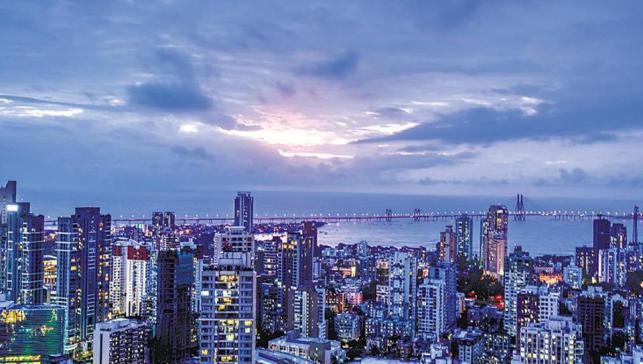 Mumbai of the light, an appealing image
Mumbai of the light, an appealing image
Like Sunil Khilnani(Boo’s husband) has rightly stated in his book The Idea of India, “Bombay’s congestion makes it impossible for the rich to flee the poor, rendering the contrasts of lifestyle vividly adjacent.” Transition of Bombay to Mumbai witnessed an undoing of city’s cosmopolitanism with increasing paranoia on migrant workers and land/caste based politics. But the nature of city still keeps open interactions unavoidable, and Annavadi, which isn’t any exception, presents a microcosm of those realities out there. The dynamic economy, post 1991 liberalization reforms, has been constantly redefining the definition of middle class; but city’s historically poor, who weren’t prepared or equipped to embrace it, has been left on a sine wave of hope and despair, and this book soaks it. Asha aspires to be the next ‘slumlord’ while her daughter Manju strives to become the first graduate from Annavadi. Even with her caste and religion based politics, Asha isn’t able to separate herself off the neighbouring family of garbage collectors, Karam and Zehrunisa, nor does she wants to. Much of the later plot surrounds the self-immolation of physically and emotionally challenged Fatima and her false statement framing Karam’s son Abdul. Unfolding of events made me realize how extremely difficult it is even for talented people to enter the middle class and to break away from the slum. In addition to their obvious economic disadvantage, they are held by invisible chains of caste, compulsion to enter stigmatized occupations, rampant corruption and vested interests of influential patrons. And having their livelihood and life savings set up in the uncertainty of encroached slums, they are forced to comply for lack of any option to redress. From this bitter lifestyle, the poor finds solace in blaming each other for things they cannot control, and we, the well-off class, who stay aloof the ground realities, often are harsh in our reservations against the poor.
In the West, and among some in the Indian elite, this word, corruption, had purely negative connotations; it was seen as blocking India’s modern, global ambitions. But for the poor of a country where corruption thieved a great deal of opportunity, corruption was one of the genuine opportunities that remained.
This book captures the ethical imaginations of people in a market dictated world where idea of a mutually supportive poor appear suicidal. Annavadi residents are not lethargic or helpless, and are constantly in pursuit of new economic possibilities. But the general definition of many things are skewed in their life, and far from the reality projected by government statistics. Entering a blue collar job isn’t a problem in first place, but knowing that this might be the sole profession for the rest of your life, might not appeal like a future worth waking up to. Here corruption is the secret key for many opportunities, ‘bridge schools’ intended to spark educational enthusiasm often becomes the only education, and financial intuitions are reduced to invisible loans from money lenders.
As every slum dweller knew, there were three main ways out of poverty: finding an entrepreneurial niche, as the Husains had found in garbage; politics and corruption, in which Asha placed her hopes; and education. Several dozen parents in the slum were getting by on roti and salt in order to pay private school tuition.
The caste systems, bhaiya hatred and shiv sena politics are never shown to be personal in Annavadi, but as regular unavoidable affairs to stay in the food chain, regardless of their position on pyramid. It was fascinating to see how Annavadi’s scavenging economy fared in global financial crisis, tracking behaviours of tourists and travellers, and how Bollywood bridged them with rest of India, rightfully or wrongfully. There were other imageries with unconventional perception, like spectre of Gandhi, Nehru and Ambedkar or the terrorist attack of 26/11. Unlike the rest of the country, they were more invested in moving on than finding sources to blame on.
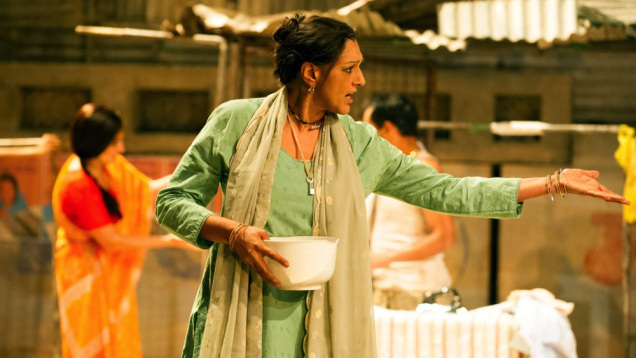 a still from National Theater, from book’s 2014 stage adaptation
a still from National Theater, from book’s 2014 stage adaptation
Seeing the exclusiveness in infrastructure of opportunity and poor translation of government’s socio economic policies made me question why haven’t these unequal societies, like Annavadi, that matters to the authorities only during elections, haven’t imploded yet. And in tracing an answer to that, I found myself back at Khilnani’s quote.
There is some truth in the western fascination towards Indian squalor, but this juxtaposed asymmetry in living conditions is not just an Indian specific problem. We all love to live in the cultivated ignorance of a well bound frog. During 2016 Olympics, Brazil government was careful to avoid favelas from reaching delegates sight. During recent Hyderabad visit by Ivanka Trump, the homeless were removed from the street by state government. We are mostly myopic towards on-going Rohingya refugee crisis or Syrian civil war; at the same time, find ourselves morally obliged to extend support on disasters happening in developed countries, even if its by flooding twitter hash tags. Similar is the public attitude towards tribal evictions for developmental projects, which is often characterized by this specific mentality, patronizing or disparaging, that we provide for them. This book’s unvarnished articulation and absence of special attributes, might not have been the most engaging narrative as far as storytellings are concerned; but, it made me realize how special and privileged I was and still am, merely by my place of birth.

There is a beautiful passage towards the end of the book that describes Abdul’s worldview. He has been repeatedly exploited for being a scavenger and now is behind bars for a crime he didn’t commit. From his perspective, ice was distinct from, better than, what it is made of. He wanted to be better than the same material essence he shared with the cynical corrupt people around him.
“In Mumbai’s dirty water he wanted to be ice.”
And in the huge pile of media, print or other, that are criticized for showcasing poverty, rightfully or hyperbolically, this work floats on top, as ‘ice’.
Behind the Beautiful Forevers: Life, Death, and Hope in a Mumbai Undercity is a non-fiction book written by the Pulitzer Prize-winner Katherine Boo in 2012. It won the National Book Award and the Los Angeles Times Book Prize among many others.[1][2] It has also been adapted into a play by David Hare in 2014, shown on National Theatre Live in 2015. (source: wiki) Advertisements Share this: